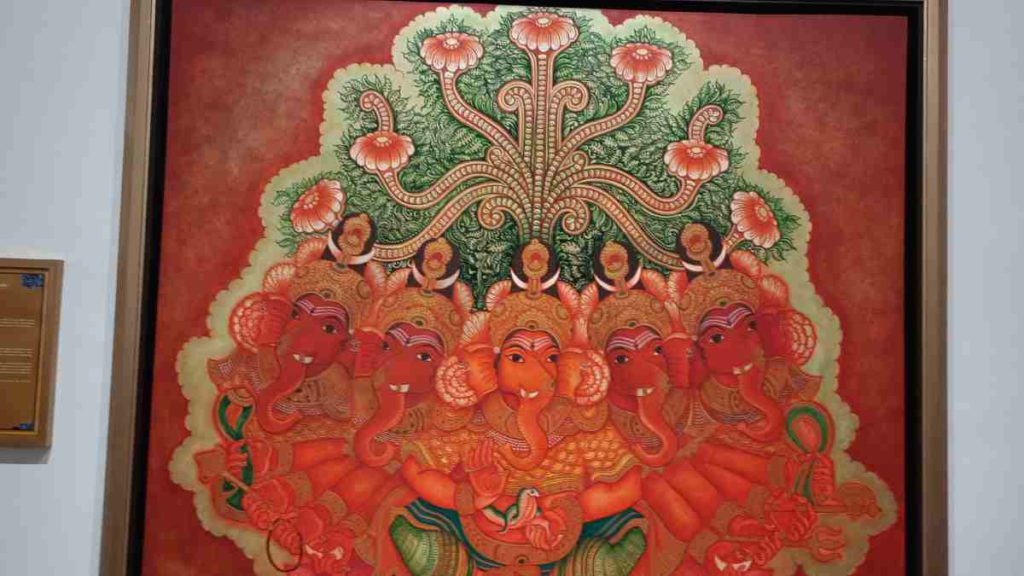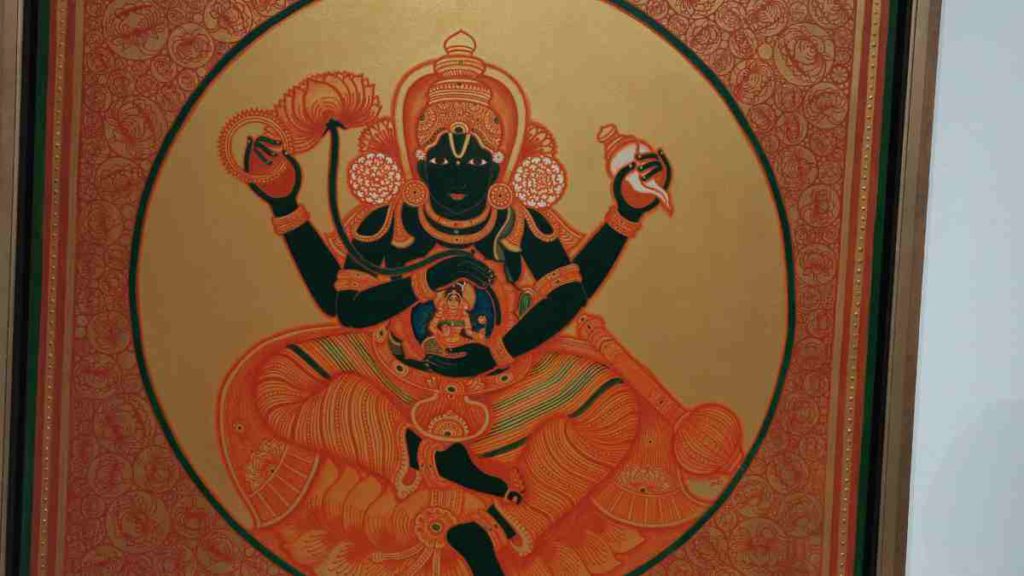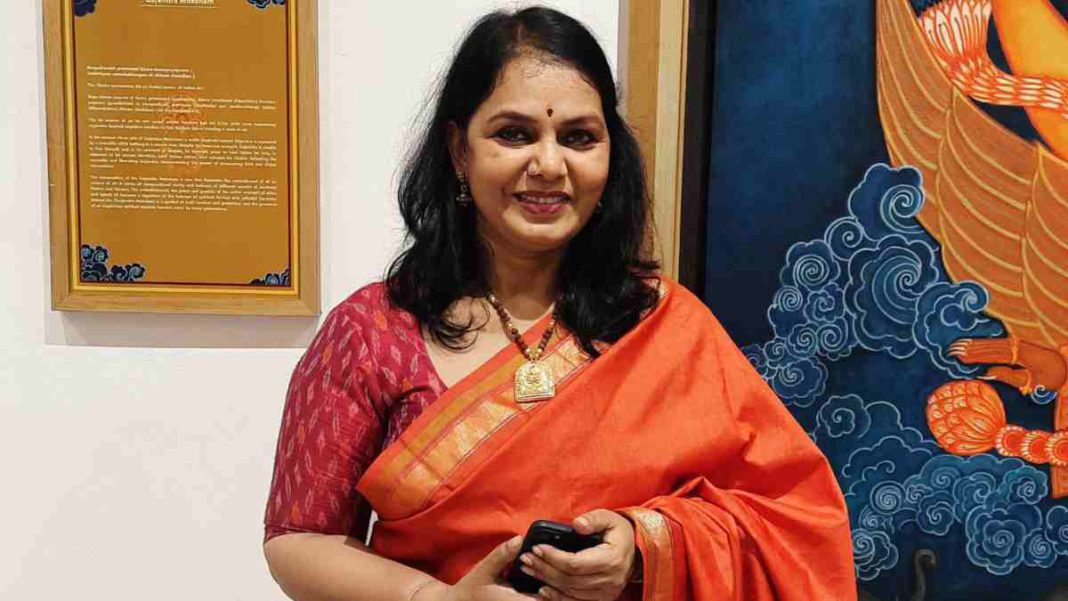INDIA. Delhi: A mesmerizing blend of ancient mythology and contemporary art is currently on display at Bikaner House, where Arpitha Reddy, a talented artist from Hyderabad, brings the age-old tales of Hindu mythology to life through a modern lens.
Her eight-day solo exhibition titled ‘Viswatma’ is a captivating journey into the heart of India’s rich cultural heritage, running from October 18 to 25.
With over 50 stunning paintings, Arpitha’s work breathes new life into the symbolism and elements found in the Puranic texts, offering a fresh perspective on the portrayal of key rituals and goddesses that have adorned the Indian subcontinent for centuries.

Arpitha’s artistic approach is both unique and mesmerizing. She wields her canvases with precision, employing sharp contours to create intricate linear hatch and flowing strokes that define the tonal gradations of the celestial elements she paints.
Her compositions are an intricate dance of dark and light, achieved through the masterful use of pigments and brushwork, resulting in a vivid tapestry of the gods, goddesses, and mythic beings.


The show commences with a series of 16 works dedicated to the enigmatic ‘Namam’ (Tilak) symbols. These vibrant depictions explore the vitality of the tilaks that grace the foreheads of the devout.
Arpitha’s inspiration for this series came during a visit to Tirumala in Andhra Pradesh, where the Namam on the forehead of the temple’s deity, Lord Venkateswara, left an indelible impression.
She explains, “The image of the tilak began to haunt me. The Vishnu Namam is generally a sharp U or a V, but here it had a graceful curvaceous shape hugging the contours of the elephant’s forehead. This became an embodiment of Bhakti.”
Moving on, the exhibition unveils a collection of 15 paintings that delve into auspicious symbols known as ‘Sumangala.’
These intricate works offer a closer look at symbols such as the lotus, conch shell, chakram, sun, and the moon. Arpitha then takes us on a journey through the ‘Dashavataras,’ where traditional storytelling meets contemporary character choreography.
Among her captivating works, you’ll also find singular studies, including the Panchmukhi Ganesha, paying homage to the murals at the Krishna temple in Guruvayur near Thrissur.
Curated by the renowned art historian Uma Nair, the exhibition beautifully weaves together themes and motifs of early Indian paintings. Nair explains, “Materials for Arpitha go beyond the story; it is about visual and verbal allegories, about weaving the narrative in many forms.”
Arpitha’s use of colors is both strategic and meaningful. She blends primary colors with secondary and tertiary shades to create a vivid visual experience. Her art is enriched with borders and textile elements that pay homage to Andhra’s kalamkari and the age-old textile traditions of the Deccan.
Uma Nair highlights, “The intricate details and embellishments of borders, flowers, and ornamentation of figures create a conversation of mural traditions, taking them forward to suit contemporary sensibilities.”
Arpitha’s art reflects her two-decade journey through various traditional art forms, including Pata Chitra, Phad, Thangal, Cherial, Tanjore, and Kalamkari.
Art historian Aman Nath commends Arpitha as a “relay-revivalist” who champions artistic engagement that preserves Bharat’s ancient heritage while embracing change.
“Our continuity does not demand a Cubist hacking of known symbolism just to experiment into the future. We add streams of change so that the wise river flows,” he added.
Don’t miss this extraordinary exhibition, open from 11 a.m. to 7 p.m., including Sundays. ‘Viswatma’ at Bikaner House is a true celebration of the fusion of divinity and modernity, showcasing the timeless stories of India in a contemporary light.



